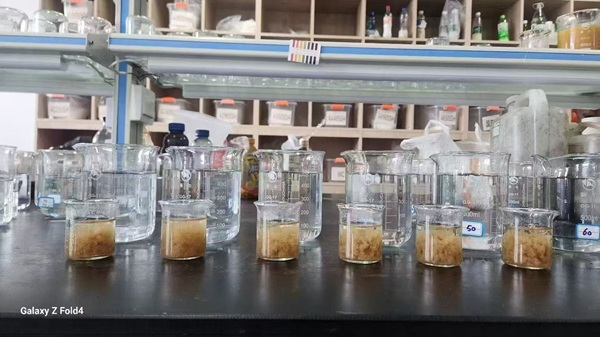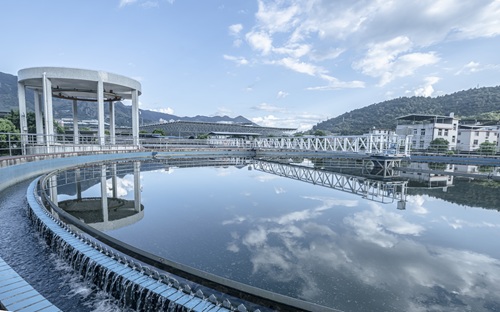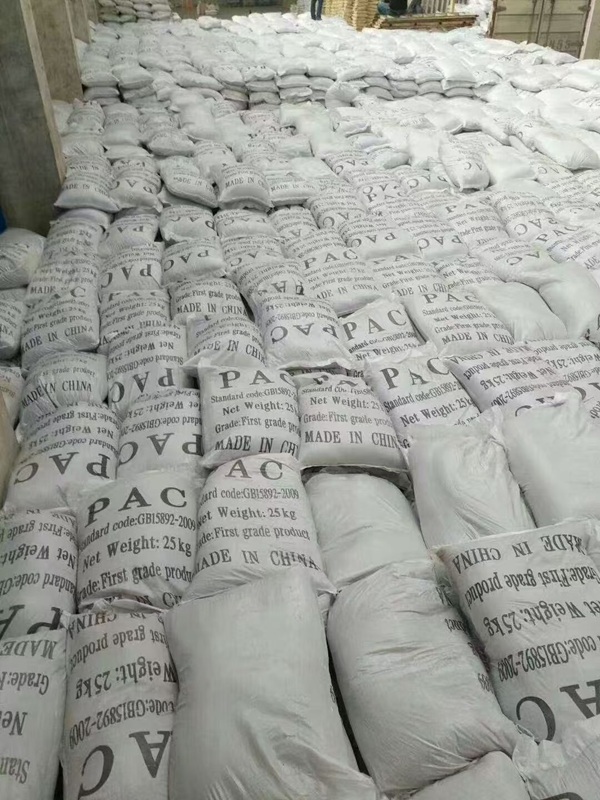
Polyaluminum chloride (PAC) has become one of the most important chemicals in modern water treatment, revolutionizing how industries and municipalities purify water. Whether you're managing a water treatment facility, working in industrial wastewater management, or simply curious about water purification technologies, understanding PAC is essential.
Polyaluminum chloride is an inorganic polymer coagulant composed of aluminum, chlorine, hydrogen, and oxygen. This acidic solution typically appears as a clear to slightly yellow liquid or as a yellow to white powder, depending on its form and concentration.
PAC is also known by several other names in the industry:
● PAC (Poly Aluminium Chloride)
● PAX
● Polyaluminium Hydroxide Chloride
● Aluminum Chlorohydrate
The chemical formula of PAC is generally represented as [Al₂(OH)ₙCl₆₋ₙ]ₘ, though its exact composition can vary based on the degree of basification.
Polyaluminum chloride is manufactured through the partial hydrolysis of aluminum chloride. This process creates high-molecular aluminum complexes that possess significantly stronger flocculation properties compared to traditional precipitants like aluminum sulfate.
During production, the hydrolysis of aluminum creates a high cation charge, which is the key to PAC's effectiveness. This positive charge is what enables the rapid neutralization of negatively charged particles in water, leading to superior coagulation performance.
Understanding PAC's properties helps explain why it has become the preferred choice in water treatment:
High Cation Charge: The positive charge created during hydrolysis attracts negatively charged particles, neutralizing their surface and causing them to agglomerate into larger flocs.
Rapid Floc Formation: The hydrolyzed aluminum complexes promote quick and stable floc development, which significantly improves sedimentation and solid separation efficiency.
Wide pH Range: PAC remains effective across a broad pH range of approximately 5 to 8, making it adaptable to various water types without requiring significant pH adjustments.
Lower Residual Aluminum: Compared to other aluminum-based coagulants, PAC leaves considerably less residual aluminum in treated water, helping facilities meet stringent quality standards.
Basification Degree: PAC products are characterized by their degree of basification—the higher this percentage, the greater the polymer content and the more efficient the product becomes in water clarification. Higher basification also means lower aluminum content and reduced aluminum residuals.

The effectiveness of PAC in water treatment is based on a two-stage process: coagulation and flocculation.
Coagulation: When PAC is added to water, its positively charged aluminum ions immediately neutralize the negative charges on suspended particles, colloids, and organic matter. This charge neutralization destabilizes these particles, causing them to lose their repulsive forces.
Flocculation: Once destabilized, the particles begin to aggregate together, forming larger clusters called flocs. These flocs are large and stable enough to be easily removed through sedimentation or filtration processes.
This process effectively removes turbidity, heavy metals, phosphates, organic substances, colors, and odors from water, resulting in significantly improved water quality.

Drinking Water Treatment: In municipal waterworks, PAC is extensively used to remove turbidity and colloidal particles. It binds fine particles and organic substances that cause water cloudiness, ensuring clear, safe drinking water. Due to its high effectiveness at low dosages, PAC has become particularly popular in drinking water facilities.
Industrial Wastewater Treatment: Industries use PAC to remove phosphates and heavy metals from their discharge water. The aluminum ions bind to the negative charges of phosphates and heavy metal compounds, creating insoluble precipitation products that settle as sludge.
Pulp and Paper Industry: PAC removes organic substances and solids from wastewater generated during pulp processing and bleaching. It's also used as a coagulant in papermill wastewater treatment, improving water quality for discharge or reuse.
Food and Beverage Industry: Facilities use PAC to improve water quality and meet strict environmental requirements, especially when dealing with high concentrations of organic matter and turbidity.
Textile and Dyeing Industry: PAC precipitates and removes dyes and organic compounds that enter wastewater during dyeing processes, reducing residual turbidity and enabling water reuse in production.
Oil and Gas Industry: In oil refining, PAC works as an oil-water emulsion destabilizer, offering excellent separation performance. Since water presence in crude oil reduces commercial value and increases refining costs, PAC plays an essential role in ensuring operational efficiency.
Cooling Water Treatment: In closed cooling water circuits, PAC removes impurities and solids that can lead to deposits and biofouling, stabilizing water quality and extending equipment service life.
Personal Care Products: PAC is used in the production of deodorants and antiperspirants as an active ingredient that creates a barrier on the skin and reduces sweat levels.
For decades, aluminum sulphate has been the standard coagulant in water treatment, used as a flocculant to remove contaminants, unwanted colors, and turbidity. However, it has significant drawbacks:
● Leaves large traces of aluminum in water supplies requiring additional filtration
● Generates vast quantities of sludge-like waste (water treatment residuals)
● High disposal costs for sludge sent to landfills
● Concerns about aluminum toxicity when residuals are used in construction or agriculture
● Potential negative impacts on ecosystems
● Easier Hydrolysis: PAC hydrolyzes more readily than aluminum sulphate
● Superior Coagulation: Achieves better coagulation performance
● Faster Floc Formation: Forms flocs more rapidly, improving efficiency
● Lower Aluminum Dosage: Requires less aluminum for the same results
● Reduced Residuals: Leaves significantly fewer aluminum residuals
● Less Sludge: Generates considerably less waste product
● Lower Operating Costs: Reduced chemical usage and disposal expenses
High Efficiency at Low Dosage: PAC enables effective coagulation and flocculation at lower dosages compared to traditional coagulants, directly reducing chemical costs.
Fast and Stable Floc Formation: The high-molecular aluminum complexes promote the formation of stable, large flocs that facilitate easier separation through sedimentation or filtration.
Versatility Across pH Ranges: PAC's effectiveness across a wide pH range means it can treat different wastewater types without significant pH adjustments, saving time and additional chemical costs.
Improved Environmental Compliance: The lower residual aluminum concentrations in treated water improve environmental compatibility and make it easier to comply with regulatory limits.
Cost-Effective: While PAC may have a higher initial cost per unit than aluminum sulphate, the reduced dosage requirements, lower sludge generation, and decreased disposal costs result in overall savings.
Corrosiveness: PAC solutions are slightly corrosive and require corrosion-resistant storage and dosing equipment. Facilities should use materials such as plastic or stainless steel to prevent corrosion damage.
Sensitivity to Water Hardness: In very hard water conditions, calcium and magnesium compounds can precipitate with PAC, potentially leading to blockages and deposits. Proper dosage adjustment or water pretreatment may be necessary.
Sludge Management: While PAC produces less sludge than alternatives, it still generates waste that requires proper disposal or treatment. Efficient sludge handling systems are essential.
Temperature Effects: Water temperature affects PAC's coagulation efficiency. At lower temperatures, the coagulation effect slows down and weakens, while higher temperatures enhance performance.
Direct Addition: Add PAC solids directly to the water requiring treatment according to the optimal dosage determined through testing. This method is simpler but may be less uniform.
Solution Preparation: Prepare PAC as a solution at a specific concentration before adding it to the water. To prepare the solution:
1. Heat water to boiling
2. Slowly add PAC while stirring continuously
3. Stir until PAC is completely dissolved
4. Use the prepared solution within 24 hours for best results
While solution preparation adds an extra step, it typically provides better, more consistent results.
Conduct Jar Tests: Due to the many unknown factors in wastewater composition, always determine the appropriate PAC dosage through jar testing. This laboratory procedure helps identify the optimal product concentration and dosage for your specific water conditions.
Control pH Levels: Monitor and adjust the pH value of your water to the optimal range (5-8). Add alkaline substances for acidic wastewater or acidic substances for alkaline wastewater to maximize PAC's coagulation effectiveness.
Proper Mixing: Ensure thorough mixing and stirring when adding PAC. Use mechanical stirring or aeration to achieve full contact between PAC and suspended solids. Optimal stirring time is typically 1-3 minutes at 10-35 rpm.
Monitor Water Temperature: Adjust PAC dosage based on water temperature, as this significantly affects performance. Higher temperatures generally require less PAC, while colder water may need increased dosing.
Follow Correct Dosing Sequence: Add PAC to water before other treatment processes. When using multiple chemicals, add the coagulant (PAC) first, followed by coagulant aids. Never reverse this order as it reduces effectiveness.

Sealed Storage: Store PAC in a dry, cool, well-ventilated location in sealed containers to prevent moisture absorption and oxidation. Never store near toxic or harmful substances.
Moisture Prevention: PAC readily absorbs moisture and can form clumps during long-term storage, affecting performance. Use moisture-proof materials to isolate containers from direct ground contact and regularly inspect for agglomeration.
Temperature Control: Avoid prolonged exposure to direct sunlight, which can cause clumping and performance degradation. Low temperatures may cause crystallization. Maintain moderate storage temperatures for optimal product stability.
Regular Inspection: Check stored PAC regularly for signs of agglomeration, discoloration, or other quality changes. Test product quality periodically to ensure stable performance.
Safety Protocols: Follow all relevant safety regulations during storage and handling. Require protective clothing, gloves, and other appropriate personal protective equipment. Keep safety warning signs clearly visible in storage areas.
Polyaluminum chloride represents a significant advancement in water treatment technology, offering superior performance, reduced environmental impact, and lower operational costs compared to traditional coagulants. Its high efficiency, rapid floc formation, and flexibility across different pH ranges make it the preferred choice for drinking water treatment, industrial wastewater management, and numerous specialized applications.
By understanding PAC's properties, proper usage methods, and storage requirements, facilities can optimize their water treatment processes while meeting increasingly stringent environmental standards. Whether you're treating municipal drinking water, industrial wastewater, or managing specialized applications in oil refining or textile manufacturing, PAC provides an effective, economical solution for achieving high-quality water treatment results.
For optimal results with polyaluminum chloride, always conduct proper testing, follow manufacturer guidelines, and work with experienced suppliers who can provide technical support and product recommendations tailored to your specific water treatment needs.